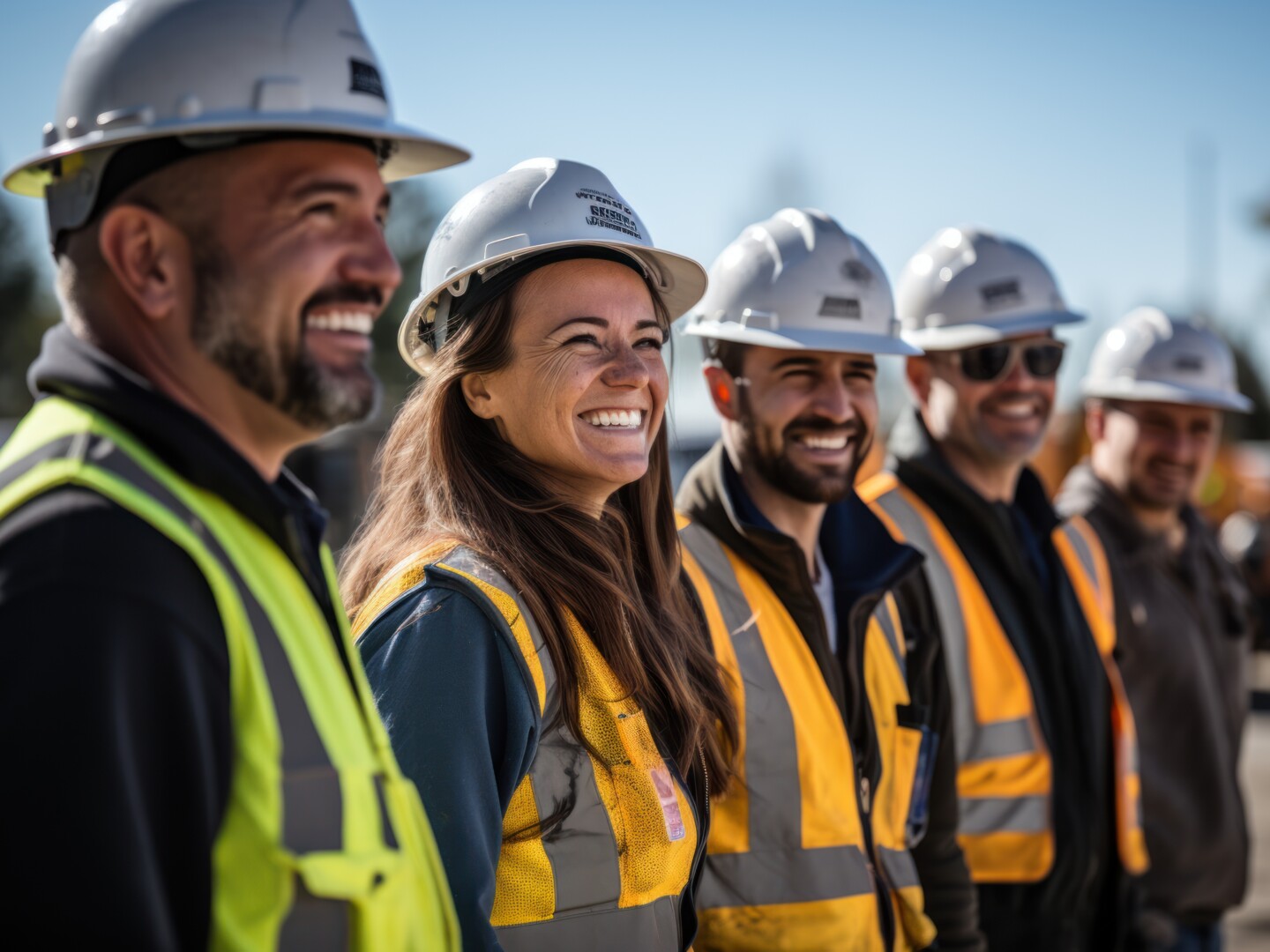


Lone working is defined by the Health & Safety Executive (HSE) as people who work by themselves without close or direct supervision. Typically, we might think of taxi drivers, parking enforcement officers and maintenance and repair staff as lone workers. However, the definition extends to a wide range of jobs and doesn’t necessarily mean that the worker is physically alone.
If an employee cannot be seen or heard by a colleague, they are a lone worker – whether that be for all, or just part, of their working day. Lone worker is a term that’s as equally applicable to desk workers empowered by technology to work from any location as it is to manual workers ‘out in the field’. Examples include:
• Construction worker on a different level of the site
• Estate agent showing clients round a property
• Retail worker processing a delivery in the stock room
• Social care worker visiting a service user’s home
• Cleaner working before others arrive or after everyone has left
• Someone working from home
Yes, it is not against the law to work alone. Although there is no specific law related to lone working, general health and safety legislation (i.e. Health and Safety at Work Act, Management of Health and Safety at Work Regulations, etc.) must be complied with.
The HSE states that: “It will often be safe to work alone. However, the law requires you to think about and deal with any health and safety risks before people are allowed to do so”. To ensure that lone workers are not put at risk, employers need to consider:
• Assessing specific areas of risk (e.g. violence, physical health, task)
• Requirements for training
• Levels of experience
• How to monitor safety and keeping in touch
• Response to any incident
Lone workers face the same hazards at work as anyone else; the greatest difference is the increased risk level of these hazards causing harm. For example, if someone working alone suffers an accident or other emergency situation, there is no one with them to call for help or assistance.
Generally, lone working risks fall in to one of three broad categories:
1. People risk – work involves proximity to individuals who pose a threat
2. Environment risk – the workplace itself poses a risk to personal safety
3. Task-based risk – the nature of the task being undertaken poses a risk
Since 2000, the PET model has been adopted by many organisations including national house builders, social service departments, retailers and several train operating companies. Using this risk methodology, it’s easier to understand the risk profile of your lone workers and what measures can be put in place to keep them safe.
Public-facing workers are confronted with a number of people-related hazards because their job involves proximity to individuals who pose a potential risk. As an employer, you need to consider who they are likely to meet? Are they:
• Total strangers/members of the public?
• People who are well known?
• People with a history of violence, aggression or criminal activity?
• People with drug, alcohol or mental health problems?
• Likely to welcome the employee’s presence?
• On their own or in larger groups?
Workers are often required to complete jobs in people’s homes whether they are a tradesperson (e.g. plumber, electrician, etc), a health worker or a surveyor. Where there is prior history with the service user, employers may have some background information on the person; however, new addresses and accounts pose the risk of an employee being confronted with an unknown quantity that must be taken in to consideration.
Potentially encountering people who have alcohol, drug or mental health problems significantly increases the level of risk that needs to be thought about and mitigated. Having a system that lets employees leave a voice clip explaining who they are about to visit and where (e.g. flat on the third floor) provides important additional information should an incident occur.
Often lone workers are entrusted with carrying and transporting valuable goods. Criminals know this and so will seek to target vulnerable vehicles and loads. In 2020, there were 4,468 reported HGV, Freight and Cargo crimes.
Similarly, opportunistic members of the public have previously targeted workers they assume to be carrying valuable items such as tools, laptops and tablets: all of which are required to complete their job efficiently.
Dealing with members of the public creates a certain level of risk because of the unpredictability of people. Majority of the time these people are complete strangers and you have no background history on their personality or state of mind.
The hospitality and retail sectors are prime examples where workers face increased risk, particularly if they are serving members of the public under the influence of alcohol or selling age-restricted items.
The level of risk should be elevated again if at any point staff are lone working, for example behind a bar on a quiet night or in a local convenience store
Employers are well-versed with the risks faced in a general office environment, but not everyone works behind a desk in a shared space. When thinking about the risks faced by lone workers, where they are working is an important factor to consider. Are they:
• Working at height?
• In a rural or isolated area?
• In a confined space?
• Travelling by public transport/own vehicle/on foot?
Furthermore, when are they working? Is it during unsociable hours when there are fewer people around leaving them more isolated?
Falls from height are the most common type of fatal accidents for workers in the UK. Similarly, slips, trips and falls are the most common type of accident that causes injuries. Therefore, the level of risk is evident when any employee is being asked to work at height.
It is imperative that staff working at height have the relevant levels of experience and training as well as the correct equipment to ensure their safety. Health and safety managers must vigilantly enforce safe working practices to mitigate this risk, especially for those working alone.
Peoplesafe personal safety devices and apps can be equipped with a fall detection feature that uses three factors to mimic a falling motion. If all three factors are sensed, an alarm will automatically be raised to our Alarm Receiving Centre (ARC) with the users GPS position for help to be sent to them.
Working in a remote area – either as part of a team or individually – is an everyday business activity across a range of industries, including job roles such as surveyors, engineers, foresters and construction workers.
People in remote areas are twice as likely to require hospitalisation due to an injury because if an incident were to occur while working in a remote area, employees may have great difficulty in seeking help and getting the response they need. In addition, mobile signal may be very poor or have ‘blackspots’ in some particularly rural areas, which can make calling for help near impossible.
Communication with lone workers is key, particularly if they are operating in remote locations. To minimise the risk of communication failure, employees should have multiple means of communication. For example, they could be supplied with a roaming sim, a satellite phone or even an emergency response beacon.
Certain industries by nature involve employees working in and amongst areas where fire and explosion can occur. Manufacturing plants, construction sites and oil and gas instrumentations are just a few workplace environments that pose much higher risks.
As well as the usual risk assessments, staff training and standard safety protocol, it’s essential that organisations go above and beyond to protect those working in hazardous environments. Employees could be supplied with an intrinsically safe device that is specially designed to operate in explosive hazardous areas.
In some cases, the very nature of the job invites a number of risks which are made significantly higher when performed by someone working alone. They could be:
• Dealing with cash
• Using machinery or tools
• In a security or enforcement role
• Assessing for or denying a service
• Discussing sensitive issues or delivering bad news
• Carrying valuables, equipment or medical supplies
Machines are now a vital asset to many organisations, capable of carrying out a wide range of tasks. It’s important to think about safety when working with them, especially when working alone, as they are easily capable of causing serious injury.
Every year, over 70,000 employees suffer non-fatal injuries; of these, 4% come from contact with machinery. In addition, around 7% of all workplace fatalities result from this type of accident.
All machinery needs to be maintained to manufacturer standards and all staff required to use machinery must be properly trained before being allowed to operate it. Employers also need to consider their response to any incident involving machinery, for example how would the operator call for help if they are knocked unconscious or in a noisy environment?
Employers have a legal duty to understand and execute their responsibilities in relation to workplace transport safety which is generally defined as “any activity involving vehicles used in a workplace.”
In Great Britain alone, there are more than 5,000 workplace accidents involving transport every year and around 50 of those involved fatalities.
Workplace vehicles should only be operated by trained and qualified drivers or under appropriate instruction and monitoring during training. An appropriate response process must be established in the event of a workplace transport incident.
Lone worker services, like the one provided by Peoplesafe, are accredited solutions that are specifically designed to monitor the safety of employees working alone and act quickly in an emergency. Operating 24/7/365, our Alarm Receiving Centre (ARC) is staffed by expert Controllers trained to manage alarms raised by lone workers.
Our service saves valuable time in an emergency. As soon as a user raises an SOS alarm, we will know who that person is, where they are and necessary important information – all of which is willingly input into our customer portal during onboarding.
Investing in a lone worker service can have a number of benefits. Not only will you be meeting your duty of care, but staff will feel safer at work and more valued as an employee, helping to reduce staff turnover and all the associated costs with recruitment.
In addition, when looking at the bigger picture, the cost of an employee suffering an injury or dangerous incident at work will result in much more crippling costs than protecting them in the first place.
Whether you have workers faced with people, environment or task-based risk, there is an appropriate solution available to protect every member of staff and making every space a safe working space.